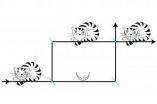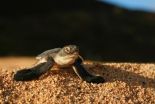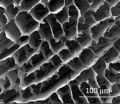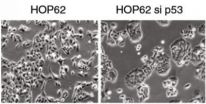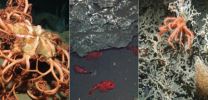(Press-News.org) The Quantum Cheshire Cat: Can a particle be separated from its properties? On July 29, the prestigious journal, Nature Communications, published the results of the first Cheshire Cat experiment, separating a neutron from its magnetic field, conducted by Chapman University in Orange, CA, and Vienna University of Technology.
Chesire Cat"Well! I've often seen a cat without a grin," thought Alice in Wonderland, "but a grin without a cat! It's the most curious thing I ever saw in my life!" Alice's surprise stems from her experience that an object and its property cannot exist independently. It seems to be impossible to find a grin without a cat. However, the strange laws of quantum mechanics (the theory which governs the microscopic world of atoms; and the most successful theory in history) tell us that it is indeed possible to separate a particle from its properties—a phenomenon which is strikingly analogous to the Cheshire Cat story. The quantum Cheshire Cat is the latest example of how strange quantum mechanics becomes when viewed through the lens of one of Aharonov's fundamental discoveries called the "weak measurement."
The idea of the Quantum Cheshire Cat was first discovered by Chapman's Prof. Yakir Aharonov and first published by Aharonov's collaborator, Prof. Jeff Tollaksen (also at Chapman University), in 2001. Aharonov's team, including Sandu Popescu (University of Bristol and Chapman's Institute for Quantum Studies) and Daniel Rorhlich (Ben Gurion University), continued to develop the Cheshire Cat theory in more recent publications.
Nature Communications published the first Cheshire Cat experiment conducted by a group of experimental physicists led by Prof. Yuji Hasegawa at the Vienna University of Technology who worked with theorist Prof. Tollaksen. They conducted an experiment involving neutrons which travel along a different path than one of their properties – their magnetic moment. Prof. Tollaksen stated "This experiment and the theory behind it will help us better understand the strangeness of the microscopic realm."
At Different Places at Once
According to the law of quantum physics, particles can be in different physical states at the same time. If, for example, a beam of neutrons is divided into two beams using a silicon crystal, it can be shown that the individual neutrons do not have to decide which of the two possible paths they choose. Instead, they can travel along both paths at the same time in a quantum superposition.
"This experimental technique is called neutron interferometry," says Professor Yuji Hasegawa from the Vienna University of Technology. "It was invented here at our institute in the 1970s, and it has turned out to be the perfect tool to investigate fundamental quantum mechanics."
To see if the same technique could separate the properties of a particle from the particle itself, Dr. Hasegawa brought together a team including Tobis Denkmayr, Hermann Geppert and Stephan Sponar, together with Alexandre Matzkin from Laboratoire de Physique Theorique et Modelisation (CNRS), Professor Jeff Tollaksen from Chapman University in California and Hartmut Lemmel from the Institut Laue-Langevin (ILL)to develop a brand new quantum experiment.
The experiment was done at the neutron source at the Institut Laue-Langevin (ILL) in Grenoble, where a unique kind of measuring station is operated by the Viennese team, supported by Hartmut Lemmel from ILL.
Where is the Cat …?
Neutrons are not electrically charged, but they carry a magnetic moment. They have a magnetic direction, the neutron spin, which can be influenced by external magnetic fields.
First, a neutron beam is split into two parts in a neutron interferometer. Then the spins of the two beams are shifted into different directions: the upper neutron beam has a spin parallel to the neutrons' trajectory, the spin of the lower beam points in the opposite direction. After the two beams have been recombined, only those neutrons are chosen, which have a spin parallel to their direction of motion. All the others are just ignored.
These neutrons, which are found to have a spin parallel to its direction of motion, must clearly have traveled along the upper path – only there, the neutrons have this spin state. This can be shown in the experiment. If the lower beam is sent through a filter which absorbs some of the neutrons, then the number of the neutrons with spin parallel to their trajectory stays the same. If the upper beam is sent through a filter, than the number of these neutrons is reduced.
… and Where is the Grin?
GrinThings get tricky, when the system is used to measure where the neutron spin is located: the spin can be slightly changed using a magnetic field. When the two beams are recombined appropriately, they can amplify or cancel each other. This is exactly what can be seen in the measurement if the magnetic field is applied at the lower beam – but that is the path which the neutrons considered in the experiment are actually never supposed to take. A magnetic field applied to the upper beam, on the other hand, does not have any effect.
"By preparing the neurons in a special initial state and then post selecting another state, we can achieve a situation in which both the possible paths in the interferometer are important for the experiment, but in very different ways," says Tobias Denkmayr. "Along one of the paths, the particles themselves couple to our measurement device, but only the other path is sensitive to magnetic spin coupling. The system behaves as if the particles were spatially separated from their properties."
Many popularized articles about the new effect have also appeared in major magazines such as on the July 27 cover of New Scientist. These articles interview the Chapman University researchers who first predicted such new kinds of quantum paradoxes.
Strong analysis requires weak measurement
This success of this unique type of quantum experiment was dependent on making so called 'weak measurements' to avoid the collapse of the superposition in accordance with the laws of quantum mechanics, a technique first introduced by Aharonov in 1988.
"When you perform weak measurements followed by post-selections, you see a completely new and surprising reality which I believe reveals true physical properties of quantum systems." says Tollaksen.
Practical Applications: High Hopes for High-Precision Measurements
Co-Director of the Institute for Quantum Studies, Prof. Jeff Tollaksen has said: "Theoretical physics has yielded the most significant benefits for our society at the lowest costs. Discoveries in fundamental physics often lead to new industries: from electricity to smartphones to satellites. Quantum physics resulted in technological advances that drive our economy, such as the entire computer revolution, electronics, and the nuclear power industry. In addition, it impacts many other disciplines such as genetics, medicine and mathematics. Experts therefore estimate that nearly half the wealth created in the 20th century arose from quantum physics. At the Institute, we're committed to producing the next generation of breakthroughs which will lead to the technology of the 21st century. Similarly, I'm sure this breakthrough will lead to many new applications including revised intuitions which can then serve as a guide to finding novel quantum effects." This "Quantum Cheshire Cat" could be used for practical applications. For example, it could be used to make high precision measurements less sensitive to external perturbations. The measurements which now have been published in Nature Communications are the first experimental proof of this phenomenon.
INFORMATION:
Consistently ranked among the top universities in the West, Chapman University provides a uniquely personalized and interdisciplinary educational experience to highly qualified students. Our programs encourage innovation, creativity and collaboration, and focus on developing global citizen-leaders who are distinctively prepared to improve their community and their world. Visit http://www.chapman.edu
Follow us on Facebook at: Chapman University Facebook
On Twitter at: @ChapmanU
On YouTube at: Chapman University YouTube Channel
The quantum Cheshire cat: Scientists separate a particle from its properties
Nature Communications and New Scientist publish results of first experiment conducted by Chapman University and Vienna University of Technology
2014-07-29
ELSE PRESS RELEASES FROM THIS DATE:
The quantum Cheshire cat
2014-07-29
The Cheshire Cat featured in Lewis Caroll's novel "Alice in Wonderland" is a remarkable creature: it disappears, leaving its grin behind. Can an object be separated from its properties? It is possible in the quantum world. In an experiment, neutrons travel along a different path than one of their properties – their magnetic moment. This "Quantum Cheshire Cat" could be used to make high precision measurements less sensitive to external perturbations.
At Different Places at Once
According to the law of quantum physics, particles can be in different physical states at ...
Major turtle nesting beaches protected in 1 of the UK's far flung overseas territories
2014-07-29
But on the remote UK overseas territory of Ascension Island, one of the world's largest green turtle populations is undergoing something of a renaissance.
Writing in the journal Biodiversity and Conservation, scientists from the University of Exeter and Ascension Island Government Conservation Department report that the number of green turtles nesting at the remote South Atlantic outpost has increased by more than 500 per cent since records began in the 1970s. As many as 24,000 nests are now estimated to be laid on the Island's main beaches every year, making it the second ...
Could summer camp be the key to world peace?
2014-07-29
According to findings from a new study by University of Chicago Booth School of Business Professor Jane Risen, and Chicago Booth doctoral student Juliana Schroeder, it may at least be a start.
Risen and Schroeder conducted research on Seeds of Peace, one of the largest peacebuilding programs that brings together teenagers from conflict regions, including Israelis and Palestinians, every year for three weeks in rural Maine. They tracked participants' feelings and attitudes toward the other national group for three years with three separate cohorts of campers. They found ...
Tough foam from tiny sheets
2014-07-29
HOUSTON – (July 29, 2014) – Tough, ultralight foam of atom-thick sheets can be made to any size and shape through a chemical process invented at Rice University.
In microscopic images, the foam dubbed "GO-0.5BN" looks like a nanoscale building, with floors and walls that reinforce each other. The structure consists of a pair of two-dimensional materials: floors and walls of graphene oxide that self-assemble with the assistance of hexagonal boron nitride platelets.
The researchers say the foam could find use in structural components, as supercapacitor and battery electrodes ...
Research may explain how foremost anticancer 'guardian' protein learned to switch sides
2014-07-29
Cold Spring Harbor, NY -- Researchers at Cold Spring Harbor Laboratory (CSHL) have discovered a new function of the body's most important tumor-suppressing protein. Called p53, this protein has been called "the guardian of the genome." It normally comes to the fore when healthy cells sense damage to their DNA caused by stress, such as exposure to toxic chemicals or intense exposure to the sun's UV rays. If the damage is severe, p53 can cause a cell to commit preprogrammed cell-death, or apoptosis. Mutant versions of p53 that no longer perform this vital function, on the ...
Study: Pediatric preventive care guidelines need retooling for computerized format
2014-07-29
INDIANAPOLIS -- With the increasing use of electronic medical records and health information exchange, there is a growing demand for a computerized version of the preventive care guidelines pediatricians use across the United States. In a new study, researchers from the Indiana University School of Medicine and the Regenstrief Institute report that substantial work lies ahead to convert the American Academy of Pediatrics' Bright Future's guidelines into computerized prompts for physicians, but the payoff has the potential to significantly benefit patients from birth to ...
Menu secrets that can make you slim by design
2014-07-29
If you've ever ordered the wrong food at a restaurant, don't blame yourself; blame the menu. What you order may have less to do with what you want and more to do with a menu's layout and descriptions.
After analyzing 217 menus and the selections of over 300 diners, the Cornell study published this month in the International Journal of Hospitality Management showed that when it comes to what you order for dinner, two things matter most: what you see on the menu and how you imagine it will taste.
First, any food item that attracts attention (with bold, hightlighted or ...
From 'Finding Nemo' to minerals -- what riches lie in the deep sea?
2014-07-29
As fishing and the harvesting of metals, gas and oil have expanded deeper and deeper into the ocean, scientists are drawing attention to the services provided by the deep sea, the world's largest environment. "This is the time to discuss deep-sea stewardship before exploitation is too much farther underway," says lead-author Andrew Thurber. In a review published today in Biogeosciences, a journal of the European Geosciences Union (EGU), Thurber and colleagues summarise what this habitat provides to humans, and emphasise the need to protect it.
"The deep sea realm is so ...
Genomic analysis of prostate cancer indicates best course of action after surgery
2014-07-29
(PHILADELPHIA) – There is controversy over how best to treat patients after they've undergone surgery for prostate cancer. Does one wait until the cancer comes back or provide men with additional radiation therapy to prevent cancer recurrence? Now, a new study from Thomas Jefferson University shows that a genomic tool can help doctors and patients make a more informed decision.
"We are moving away from treating everyone the same," says first author Robert Den, M.D., Assistant Professor of Radiation Oncology and Cancer Biology at Thomas Jefferson University. "Genomic ...
Optimum inertial self-propulsion design for snowman-like nanorobot
2014-07-29
Scale plays a major role in locomotion. Swimming microorganisms, such as bacteria and spermatozoa, are subjected to relatively small inertial forces compared to the viscous forces exerted by the surrounding fluid. Such low-level inertia makes self-propulsion a major challenge. Now, scientists have found that the direction of propulsion made possible by such inertia is opposite to that induced by a viscoelastic fluid. These findings have been published in EPJ E by François Nadal from the Alternative Energies and Atomic Energy Commission (CEA), in Le Barp, France, and colleagues. ...
LAST 30 PRESS RELEASES:
Black women hospitalised in USA with blood infection resistant to last-resort antibiotic at increased risk of death
NEC Society Statement on the Watson vs. Mead Johnson Verdict
Lemur’s lament: When one vulnerable species stalks another
Surf clams off the coast of Virginia reappear – and rebound
Studying optimization for neuromorphic imaging and digital twins
ORNL researchers win Best Paper award for nickel-based alloy tailoring
New beta-decay measurements in mirror nuclei pin down the weak nuclear force
Study uncovers neural mechanisms underlying foraging behavior in freely moving animals
Gene therapy is halting cancer. Can it work against brain tumors?
New copper-catalyzed C-H activation strategy from Scripps Research
New compound from blessed thistle promotes functional nerve regeneration
Auburn’s McCrary Institute, ORNL to partner on first regional cybersecurity center to protect the nation’s electricity grid
New UNC-Chapel Hill study examines the increased adoption of they/them pronouns
Groundbreaking study reveals potential diagnostic marker for multiple sclerosis years before symptom onset
Annals of Internal Medicine presents breaking scientific news at ACP’s Internal Medicine Meeting 2024
Scientists discover new way to extract cosmological information from galaxy surveys
Shoe technology reduces risk of diabetic foot ulcers
URI-led team finds direct evidence of ‘itinerant breeding’ in East Coast shorebird species
Wayne State researcher aims to improve coding peer review practices
Researchers develop a new way to safely boost immune cells to fight cancer
Compact quantum light processing
Toxic chemicals from microplastics can be absorbed through skin
New research defines specific genomic changes associated with the transmissibility of the monkeypox virus
Registration of biological pest control products exceeds that of agrochemicals in Brazil
How reflecting on gratitude received from family can make you a better leader
Wearable technology assesses surgeons’ posture during surgery
AATS and CRF® partner on New York Valves: The structural heart summit
Postpartum breast cancer and survival in women with germline BRCA pathogenic variants
Self-administered acupressure for probable knee osteoarthritis in middle-aged and older adults
2024 Communicator Award goes to “Cyber and the City” research team based in Tübingen
[Press-News.org] The quantum Cheshire cat: Scientists separate a particle from its propertiesNature Communications and New Scientist publish results of first experiment conducted by Chapman University and Vienna University of Technology



